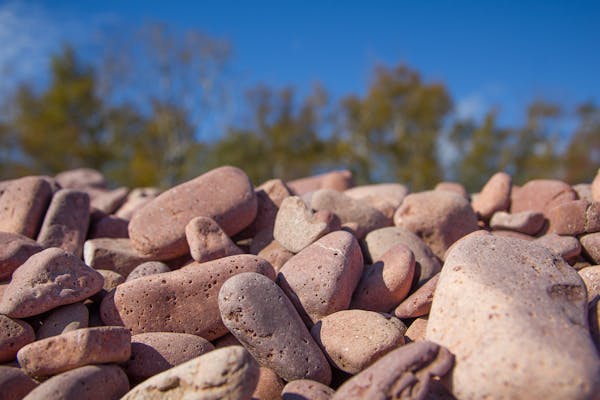DULUTH — University of Minnesota Duluth large lakes researcher Jay Austin told the students he was bringing out to work on Lake Superior this week to pack some winter gear: Despite the August heat, it was going to be chilly 50 miles off Grand Marais.
"It's been a remarkably cold year," he said of the lake, and scientists aren't entirely sure why. His group is working on UMD's Blue Heron research vessel, collecting equipment in 600 feet of water that's been monitoring temperatures and currents for a year. He expects to find answers to the unusual cold in that data.
One metric that illustrates the unusual temperatures is the point in summer that a layer of the lake reaches 39 degrees. That's when the lake is able to form a warmer layer at the surface. The open waters of Lake Superior typically reach that temperature in late June or early July. As of early this week, that still hadn't happened in the deep central and eastern parts of the lake, Austin said, putting conditions on par with the extremely cold years of 2014 and 1996. Although this past winter was a frigid one, it wasn't as severe as either of those years, he said.
Currently, on average, the lake hits that warming milestone two weeks earlier than it did four decades ago, reaching its peak temperatures by mid-August. But the open waters of Lake Superior aren't likely to warm up this year, said Austin, a physics and astronomy professor who is part of UMD's Large Lakes Observatory.
According to NASA, Lake Superior was abnormally cold in late July, running 7 degrees below average for this time of year. It's the only Great Lake seeing such a phenomenon.
And the lake's icy feel in recent days isn't limited to open water. Despite 80-degree days, swimmers off the North Shore and Park Point also have experienced wild swings in water temperatures, the Duluth National Weather Service's Twitter account pointed out.
Ketzel Levens, a forecaster with the service, noticed a rapid drop from a nearly 70 degree surface temperature to the 40s last week. A phenomenon called upwelling is pulling water from deeper parts of the lake closer to shore. Southwest winds that blew parallel to the North Shore for days pushed warmer surface water east, away from the coast, allowing water to rise from the depths.
Levens took a water thermometer with her in a kayak off Park Point, and measured 48 degrees. Water on the bay side of the point, coming from the St. Louis and Nemadji rivers, measured 75 degrees the same day.
"It's warming up a little bit — warming might be a strong term — but we are recovering back into the low 50s at the moment," Levens said.
UMD has two buoys that measure things such as temperature near Knife River's McQuade Harbor — one near the shore and one offshore. The drastic declines were seen in the buoy closer to the shore.
"Upwelling can cause rapid, even dangerous, swings in temperatures," said Austin, whose research includes lake circulation. "A lot of us have experienced swimming being beautiful on the North Shore one day and hazardous the next."
Because of climate change, colder-than-average years likely will be more infrequent, but they'll continue to happen, Austin said. This year's cold lake temperatures have little to do with climate change, since that involves average global temperatures and weather patterns over time.
"Individual locations display a high amount of variability," he said, "and (Lake) Superior is no exception to that."

Minnesota State Patrol celebrates diverse new class of troopers

Fired Mpls. teacher accuses management of 'cancerous rot'

Jill Biden rallies women, teachers for the Biden-Harris ticket in Bloomington speeches
Neighbors, city officials at odds over Rochester lake dam


